Haptic
Latest

Qualcomm is working to bring advanced haptics to Android
Qualcomm is partnering with Lofelt to develop advanced haptics tools for Android.
Saqib Shah02.23.2021
Facebook's prototype VR bangle squeezes and vibrates your wrists
If VR is ever going to go mainstream, it's going to need to ditch the bulky accessories while still letting people interact with the virtual world. It's an idea that researchers at Facebook's Reality Labs are developing with a prototype called Tasbi. The device is a chunky, wrist-worn haptic bangle that uses a combination of squeezes and vibrations to let you "feel" what you're doing in-game.
Daniel Cooper07.22.2019
Netflix experiment rumbles your phone during shows
Netflix's Hack Days tend to produce at least one or two genuinely practical ideas, and that's certainly true for its 2019 efforts. One of the biggest experiments from the in-house event, Project Rumble Pak, syncs its namesake haptic feedback effects to key moments in videos -- you could feel every explosion and punch. You'd only experience this on a mobile device, of course, but it could give you a good reason to watch on your phone instead of waiting to reach your TV.
Jon Fingas06.20.2019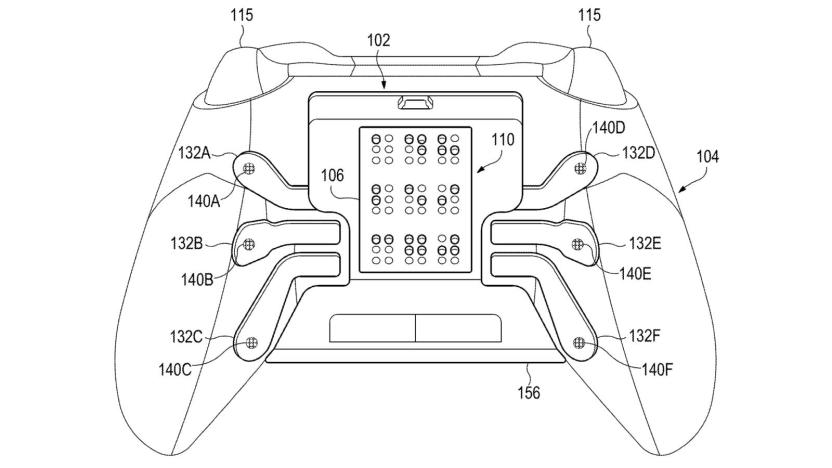
Microsoft designs an Xbox controller with Braille
Microsoft is clearly invested in adaptive gaming controllers. Its Xbox Adaptive Controller for Xbox One and PC was the star of its latest Super Bowl ad. The company spent more than a year designing accessible packaging, and it recently teamed up with the Department of Veterans Affairs to bring Xbox Adaptive Controllers to rehabilitation centers across the US. Now, it looks like Microsoft could be working on a controller for blind and visually-impaired gamers. The company filed a patent application for a controller with Braille inputs and outputs.
Christine Fisher05.07.2019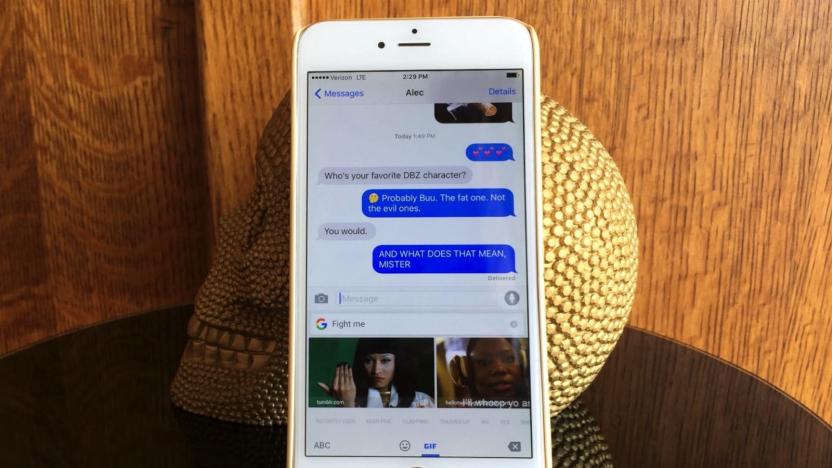
Google adds haptic feedback to its iPhone keyboard
Haptic feedback has been a feature in iPhones for the past few years, but you wouldn't know it while you were typing -- even third-party keyboards either use it in limited situations (like SwiftKey) or ask you to pay up. Google is willing to step up to the plate with a full and free solution, though. The latest version (1.40) of Gboard for iOS has introduced an option for haptic feedback with key presses, giving you reassuring thumps as your fingers hit the glass. You can't fine-tune the vibration strength like you can with Android, but that tactile experience will be there.
Jon Fingas02.14.2019
CES 2019 recap: Day one
Monday at CES 2019 didn't quite match the hectic pace of Sunday, but there was a lot for gamers to see. We played with Razer's Hypersense haptic feedback system and found it a bit underwhelming, but the Turret Xbox One keyboard and mouse was more useful. Alienware unveiled a 240 Hz m15 gaming laptop that will beat HP's Omen 15 to market, along with an OLED screen version and the beastly Area 51m with an upgradeable CPU and GPU.
Steve Dent01.09.2019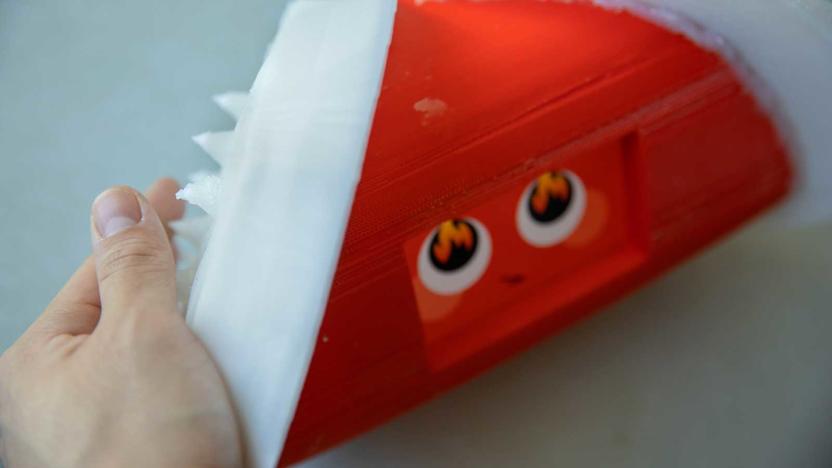
Emotional robot uses goosebumps to show how it's feeling
Sure, a robot can show how it's feeling (insofar as a robot can feel) with its face, but that's not the only way living beings do it. Humans have their goosebumps, for instance, while cats and dogs will raise their fur. Cornell wants to bring that nuance to synthetic beings. Its researchers have crafted a robot that uses a soft, adjustable skin to provide a tactile indication of a robot's emotion -- as the university put it, you can feel its feelings. It may develop goosebumps if it's happy, spikes if it's angry, or just a timid response if it's sad and needs a hug.
Jon Fingas07.16.2018
Microsoft’s mad scientists are making AR more tactile
Unless you hate fun, Microsoft's best division is far and away its Research group, which has given us the nearest thing to a Holodeck, a live-action version of Minecraft and much more. Microsoft's gang of crazy researchers is at it again, showing off a bunch of new controllers for augmented and virtual reality. They're strictly experimental for now, but show a lot of potential for making AR and VR more fun and useful.
Steve Dent03.12.2018
Apple settles with Immersion over haptic feedback licensing
In 2016, haptic technology company Immersion filed two rounds of lawsuits against Apple. Both alleged that the tech giant had infringed upon some of Immersion's patents with the first focusing on the iPhone 6, 6 Plus, 6s and 6s Plus as well as Watch, Watch Sport and Watch Edition. The second added the MacBook and MacBook Pro lines to its complaint. Immersion also filed a complaint with the US International Trade Commission (ITC), which launched an investigation into the alleged patent violations a few months later. But the saga may be nearing an end because today, Immersion announced that the two companies have reached a settlement.
Mallory Locklear01.29.2018
'Feel' your drone with MotionPilot's haptic joystick
Flying a drone isn't as easy as it looks, as any beginner who has ever purchased one of the pricey things and then immediately crashed it can attest. A startup called MotionPilot wants to help beginners and pros alike with a joystick that makes it more intuitive and tactile at the same time. The device, still in a prototype stage, has motion sensors that let you maneuver a drone just by rotating and tilting your hand, while haptics let you feel it turn and accelerate.
Steve Dent01.19.2018
Google bought a UK startup that turns screens into speakers
Over the past year, Google has demonstrated its desire to step up its hardware game. The company bought HTC's Pixel team for $1.1 billion, designed its own imaging chip for the Pixel 2 and also hired a key Apple chip designer. Bloomberg reports that in its bid to gain an edge on the competition, Google has quietly snapped up UK startup Redux, a small team focused on delivering sound and touch feedback via mobile displays.
Matt Brian01.11.2018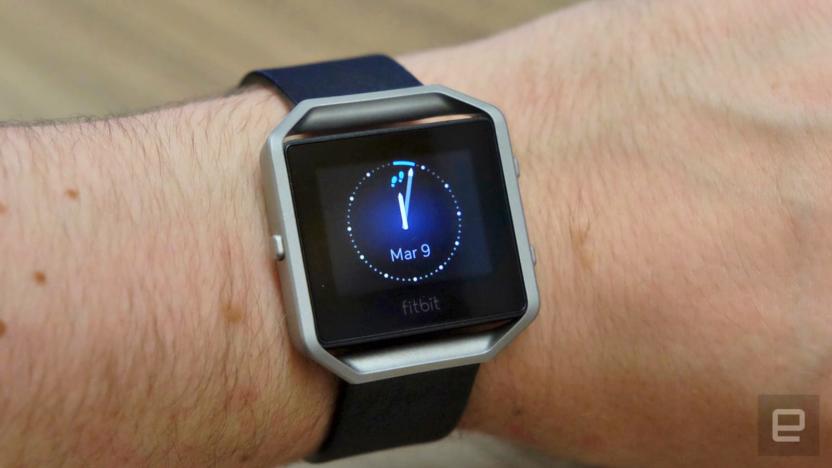
Fitbit faces ill-timed lawsuits over haptic feedback
Fitbit is facing hard times between slowing fitness tracker sales and a reportedly floundering smartwatch project. Unfortunately, there's more bad news to add to the pile. Immersion is suing Fitbit in China and the US for allegedly violating multiple patents (three in each country) for haptic feedback. Supposedly, devices ranging from the original Flex to the Blaze all borrow Immersion's approach to vibrating a device in response to commands and for alerts. Fitbit rebuffed "numerous attempts" to strike a licensing deal, Immersion claims, so this is considered a last resort.
Jon Fingas07.11.2017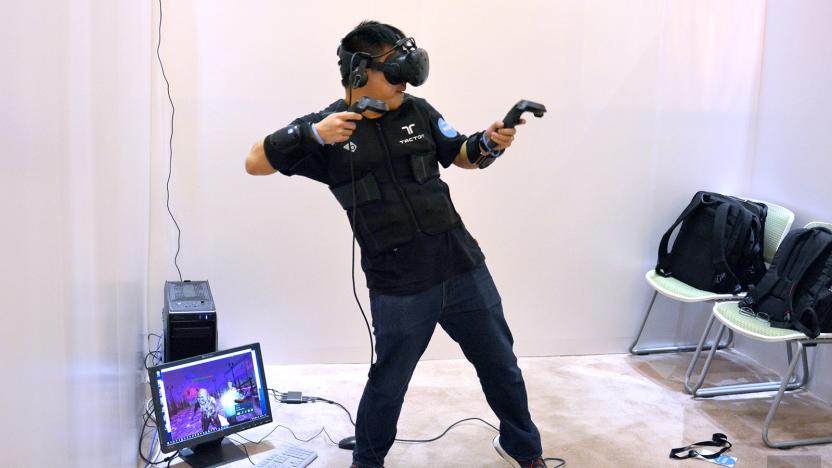
bHaptics' TactSuit is VR haptic feedback done right
Every now and then, we come across a new attempt to bring haptic feedback to VR, but we've yet to see one that's fully convincing; those that are still around tend to be both pricey and far from ready for the market. Well, this is apparently no longer the case thanks to bHaptics. At HTC Vive X demo day in Shanghai, I got some hands-on time with this Korean startup's TactSuit, a wireless kit consisting of a haptic mask (which is a rarity), two haptic sleeves and a haptic vest. The fascinating part here is that it comes with a total of 87 feedback points, which is a lot more generous than what the other suits offer. It'll also cost less than its direct competitor, Nullspace VR's $549 Hardlight suit which only has 16 feedback points.
Richard Lai07.02.2017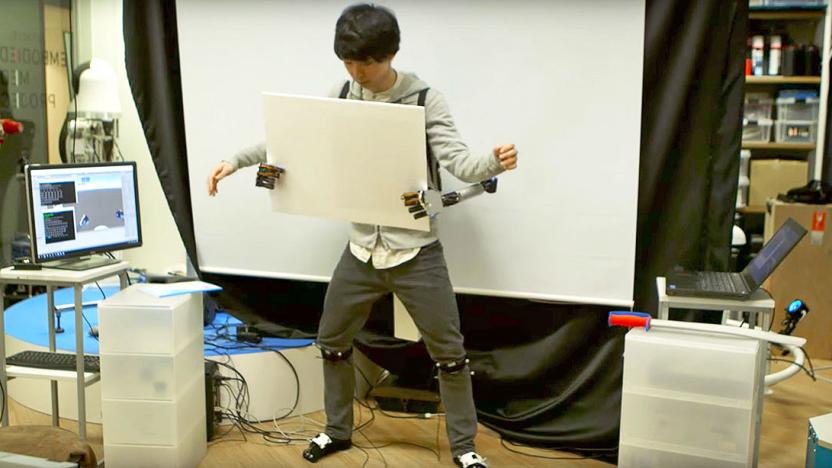
Adding a second pair of arms is as easy as putting on a backpack
There's only so much you can do with two arms and hands. That's basic science. But what if you could add extras without the need for ethically shady surgery or trading your apartment for a hovel in the shadow of a nuclear power plant? That's what researchers from Keio University and the University of Tokyo hope to achieve with their "Metalimbs" project. As the name suggests, Metalimbs are a pair of metal, robotic arms that doubles the amount of torso-extremities and worn with a backpack of sorts. And unlike thought-powered prosthetics we've seen recently, these are controlled not with your brain, but your existing limbs. Specifically, your legs and feet.
Timothy J. Seppala06.02.2017
A haptic wristband could help the blind 'see' the world
Technology to help the blind navigate usually focuses on replacing the sight they're missing or by adding auditory cues to an already cluttered soundscape. But for many sight-impaired individuals, the sense they rely on most is one that tends to be ignored by a lot of tech-based solutions: touch. It's a subtle way to convey a lot of information, and the design company WearWorks is looking to take advantage of this with its new haptic wristband, guiding people around via simple vibrational cues.
Kris Naudus03.03.2017
Nintendo's HD Rumble will be the best unused Switch feature of 2017
If I had to describe Nintendo in just three words, I'd steal the shared city slogan of Austin, Santa Cruz and Portland: "Keep Nintendo Weird." The Japanese game giant delights in its unique character and has made a habit of defying convention. Nintendo's gimmicks are always fascinating, but they don't usually work out. The Wii Remote's speakers largely went unused. Most third-party developers failed to take advantage of the Wii U touchscreen. So what's Nintendo Switch's soon-to-be-overlooked innovation? A haptic feedback system called HD Rumble.
Sean Buckley01.13.2017
Meet the VR boots that want to make you feel every step
If 2016 was the year of virtual reality, 2017 might just be the era of VR accessories. Japanese gadget-maker Cerevo has debuted Taclim, a pair of motion controllers and shoes that provide haptic feedback in VR, vibrating in various ways as players walk across different surfaces or kick enemies in the face.
Jessica Conditt01.03.2017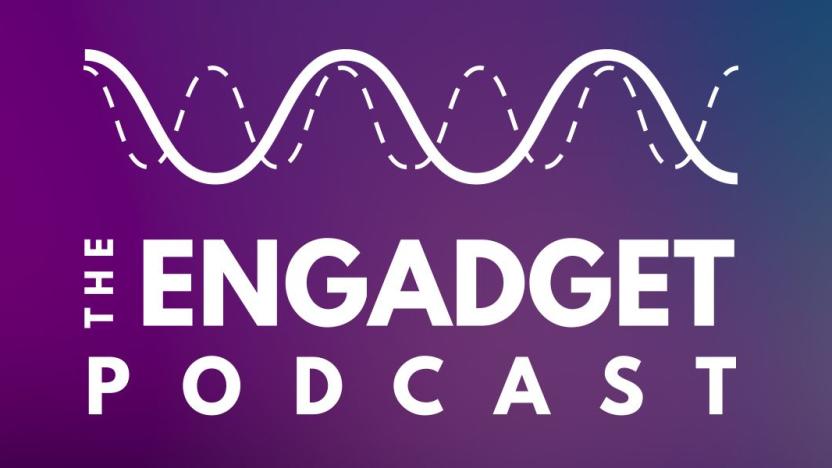
The Engadget Podcast Ep 17: Mansion on the Hill
Executive editor Christopher Trout and reviews editor Cherlynn Low join host Terrence O'Brien to talk about the week's biggest news, including: Pandora Premium, Fitbit's purchase of Pebble and the gaming industry's nostalgia overload. Then Chris will tell the panel about his investigation into a failed gaming accessory that's found a second life as a sex toy -- clearly things get a little NSFW. Then all three will talk about what Amazon Go and other advancements in automation and mean for low-skill and low-wage jobs.
Terrence O'Brien12.09.2016
The Novint Falcon: Haptic joystick turned futuristic sex toy
I'm standing in the studio at Engadget's San Francisco headquarters, holding the remains of a pulverized, cream-filled doughnut. The pastry's sticky, off-white filling clings to the shaft of a bright pink vibrator, taped to the end of a silver, cone-shaped device with three arms that come together at a point and a horseshoe-shaped base. This disembodied robot boob is the Novint Falcon, a one-time game-changing game controller turned teledildonics legend. NSFW Warning: This story may contain links to and descriptions or images of explicit sexual acts.
Christopher Trout12.06.2016
The OmniWear Arc is a haptic neckband for serious gamers
There's a lot to keep track of in a game like Counter-Strike. You need to know your location, where your teammates are, your ammo supply and most importantly -- where your enemies are. With all these sights and sounds coming at you, it's easy to miss something, which is why OmniWear is looking to offload some of that cognitive load to another sense: touch. The Arc neckband, launching on Kickstarter today, vibrates to let you know where your opponents lurk, ensuring you don't miss a thing.
Kris Naudus10.18.2016